#how to install PHP
Explore tagged Tumblr posts
Text
PHP Installation : Step-by-Step Guide for Windows, macOS & Linux
PHP Installation: Learn how to install PHP on Windows, macOS, and Linux with this easy step-by-step tutorial. Set up your PHP development environment quickly and start coding dynamic websites today! 🚀 PHP Installation Guide for Beginners: Step-by-Step Tutorial PHP (Hypertext Preprocessor) is a powerful server-side scripting language that powers millions of websites, including WordPress. Before…
#how to install PHP#install PHP Linux#install PHP macOS#install PHP Windows#PHP beginner installation#PHP development environment#PHP environment setup#PHP installation#PHP setup guide#PHP tutorial
0 notes
Text
felt like i was going crazy yesterday trying to set up a login system for this website 😭 it was like i was back in college again!
#im using supabase for auth and i was like someone pls...show me how to do this...with just vanilla js#every tutorial is with like react or next#im trying to do this site with just html css and js (and php)#so i can learn#and later if i wanna move things to a framework i wont be completely lost if something breaks!#but yea i pretty much settled on like using react for part of the website so i can get this login set up#i found some videos and articles so im pretty sure its possible#other options is to use the archived js example i finally found for supabase auth but#it scares me that its archived#fingers crossed next time i code this works#i think this has to be the hardest part of the coding#i wish i could do my own auth thing but thats super dangerous as a beginner#anyways if i get stuck again ill just try the archived js example#and if im still stuck...#idk find another auth thing to use ig#BF RALLY WILL HAPPEN IT WILL#if it doesnt it means i died or someshit lol#but yea im mainly just like ugh about react cause i seriously dont need all those libraries added rn#this sites not supposed to be that complicated imo like yea its dynamic but its like a neopets like thing#the partial react thing doesnt rely on installing a bunch of stuff (i think)#so maybe we r good#????#web development#webdev#coding#codebreakers#if someone has the magic video to hand hold me through these pls send lol
2 notes
·
View notes
Text
#mac composer install#composer macbook#download composer for mac#install composer mac#install composer mac os x#installing composer on mac#install composer osx#install composer on mac#composer install mac os#composer install on mac#mac install composer#How to Install and Configure PHP Composer in MacOS
0 notes
Text
youtube
#Databaseless CMS#Grav cms#How to install grav#Grav php blogging platform#Grav vs Wordpress#Grav blogging#Grav installation#Blog tutorial#no database blog#Wordpress alternative#Youtube
0 notes
Text

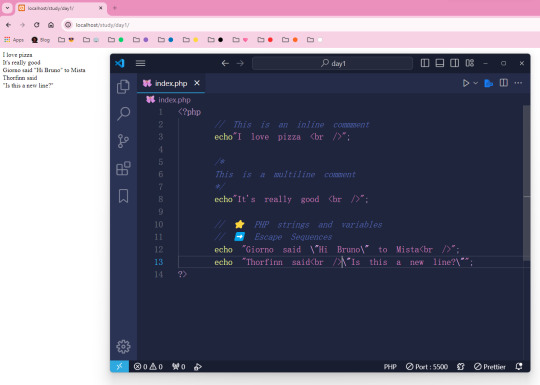
Monday 4th March 2024 - [ Week 1 Day 2 ]
Finally figured out how to get the server working. Had to install some VSCode and Chrome extensions to make sure each refresh works!
Still haven't figured out how to get VSCode to run my PHP code just in the console. So, I'll just use those online PHP sandbox/compiler to work on that side of PHP!
Didn't learn too much on PHP programming itself today but at least I got the PHP to work locally!

💌 Day 2: What are your three goals with learning PHP?
Build a simple website using PHP
Build a simple console app with PHP
Still have an interest learning PHP after the challenge!
[ The challenge ]

#5in5weeks#study challenge#programming#coding#studyblr#codeblr#studying#comp sci#progblr#tech#programmer#php#study#study hard#studyspiration#night study#stay productive
48 notes
·
View notes
Text
I've finally fixed trainsingames.com, so you can now actually read the things I wrote there, see the screenshots and so on. Just to be clear, this isn't my best work, it's all from 2013 or earlier, I'd definitely do and say things differently now, but hey, I still made it, and I don't want to see it gone.
The site is basically archived. I have no plans to write anything more for it at the moment. Never say never, of course, but given how few games I played over the past years, I don't really see it happening, sorry.
(I also have no plans to open it up to others, sorry, because that's something I'd need to manage, I'd probably need to install a proper CRM and so on, and I just don't have the time or energy for that among all my other hobbies.)
On the website front, I may do some changes, just to make it look nicer, but there's no set time frame for that. I also want to change it to a system where the site is just static HTML that gets regenerated from PHP when I update it (or something like that) to avoid any issues like this one in the future. For the record, the problem was that the Markdown parser I had from ~2007 didn't work with modern PHP versions, so I finally updated it.
And yes, I made trainsingames.com long before this blog, that's where I got the idea for this URL from.
8 notes
·
View notes
Text
I'm a little embarrassed to make this post seeing how I still have plenty of backlogs but all my clients' down payments went to my bills and I am down to my last 300 PHP/5 USD until I receive another installment next week
Slots are still available for January-February and all commissions are 10% off! Commission info here. DM me to reserve!
Ko-fi tips are also highly appreciated! 🥺
I will draw anything within my T&Cs but right now I prefer BG3 commissions! Here are samples of what I draw!






#art commisions#commissions#commissions open#open for commissions#baldur's gate 3#bg3 fanart#bg3 fanartist#artist for hire
76 notes
·
View notes
Note
That is SO COOL that you're doing your own gallery for your art. Very clever. I'd love if it caught on with other artists. Is it hosted somewhere, or are you building it yourself?
I've got my own website and hosting, and I'm using third-party software to run my gallery.
I would love to see more of the old school web galleries catching on, but the biggest hurdles today are 1) finding web hosting, and 2) knowing how to build a site.
Neocities is a superb place to learn, and they have generous free hosting and extremely affordable membership options, and no ads, ever. They're funded entirely by their supporters, rather like AO3, so they're not beholden to ad companies—which means they don't have to police content (apart from the typical "nothing in violation of state/federal/international law" as stated under the Offensive Material and the Lawful Use section in their Terms). It's actually a fantastic place for artists to upload their mature art*.
*But you can't hotlink without being a paid supporter. Hotlinking is embedding images on sites outside of where the image is hosted. So if you wanted to use Neocities as a place to upload your nsfw art so you could post it on AO3, you'd need to pay for that ability. But still, having a gallery where you can direct people to your art is pretty sweet.
The only drawback to Neocities that I've seen is that you're limited to doing everything with HTML/CSS and Java, and for experienced web devs who are used to managing their own databases and working with PHP and installing whatever software they want, basically having complete control over every aspect of their site, Neocities is a bit limited. But for new and intermediate web builders, this shouldn't be a problem. There are lots cool ways to build your own website and have a gallery and just play around and pretend it's 1997 again. (Again? For some, maybe.)
I've got a Neocities site that I occasionally tinker with. Who knows, maybe if enough people join up we can start a DP web ring or a Pompep Club like how fandom used to do back in the early internet days.
(I am not associated with Neocities.org or being paid to promote their services. I just really like what they're doing.)
#asks#didn't mean to go off on a tangent here#i'm just passionate about websites and web 1.0#neocities#old school#web building#fandom#i personally would've killed for something like neocities in 98#1 GIGABYTE space? FREE? with NO ADS?
11 notes
·
View notes
Text
Vibecoding a production app
TL;DR I built and launched a recipe app with about 20 hours of work - recipeninja.ai
Background: I'm a startup founder turned investor. I taught myself (bad) PHP in 2000, and picked up Ruby on Rails in 2011. I'd guess 2015 was the last time I wrote a line of Ruby professionally. I've built small side projects over the years, but nothing with any significant usage. So it's fair to say I'm a little rusty, and I never really bothered to learn front end code or design.
In my day job at Y Combinator, I'm around founders who are building amazing stuff with AI every day and I kept hearing about the advances in tools like Lovable, Cursor and Windsurf. I love building stuff and I've always got a list of little apps I want to build if I had more free time.
About a month ago, I started playing with Lovable to build a word game based on Articulate (it's similar to Heads Up or Taboo). I got a working version, but I quickly ran into limitations - I found it very complicated to add a supabase backend, and it kept re-writing large parts of my app logic when I only wanted to make cosmetic changes. It felt like a toy - not ready to build real applications yet.
But I kept hearing great things about tools like Windsurf. A couple of weeks ago, I looked again at my list of app ideas to build and saw "Recipe App". I've wanted to build a hands-free recipe app for years. I love to cook, but the problem with most recipe websites is that they're optimized for SEO, not for humans. So you have pages and pages of descriptive crap to scroll through before you actually get to the recipe. I've used the recipe app Paprika to store my recipes in one place, but honestly it feels like it was built in 2009. The UI isn't great for actually cooking. My hands are covered in food and I don't really want to touch my phone or computer when I'm following a recipe.
So I set out to build what would become RecipeNinja.ai
For this project, I decided to use Windsurf. I wanted a Rails 8 API backend and React front-end app and Windsurf set this up for me in no time. Setting up homebrew on a new laptop, installing npm and making sure I'm on the right version of Ruby is always a pain. Windsurf did this for me step-by-step. I needed to set up SSH keys so I could push to GitHub and Heroku. Windsurf did this for me as well, in about 20% of the time it would have taken me to Google all of the relevant commands.
I was impressed that it started using the Rails conventions straight out of the box. For database migrations, it used the Rails command-line tool, which then generated the correct file names and used all the correct Rails conventions. I didn't prompt this specifically - it just knew how to do it. It one-shotted pretty complex changes across the React front end and Rails backend to work seamlessly together.
To start with, the main piece of functionality was to generate a complete step-by-step recipe from a simple input ("Lasagne"), generate an image of the finished dish, and then allow the user to progress through the recipe step-by-step with voice narration of each step. I used OpenAI for the LLM and ElevenLabs for voice. "Grandpa Spuds Oxley" gave it a friendly southern accent.
Recipe summary:
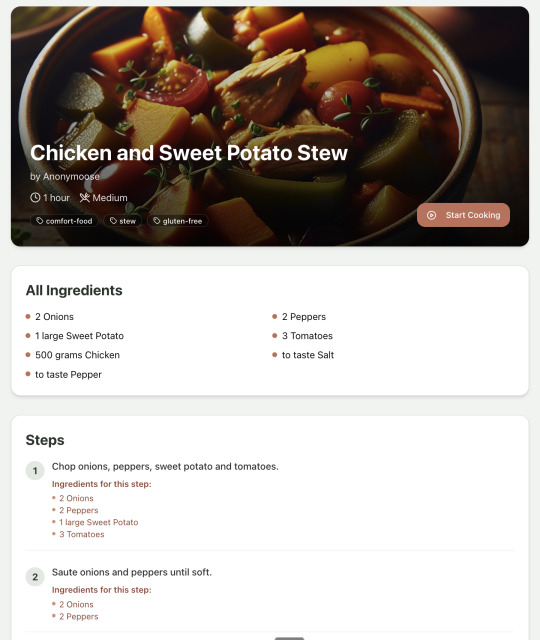
And the recipe step-by-step view:
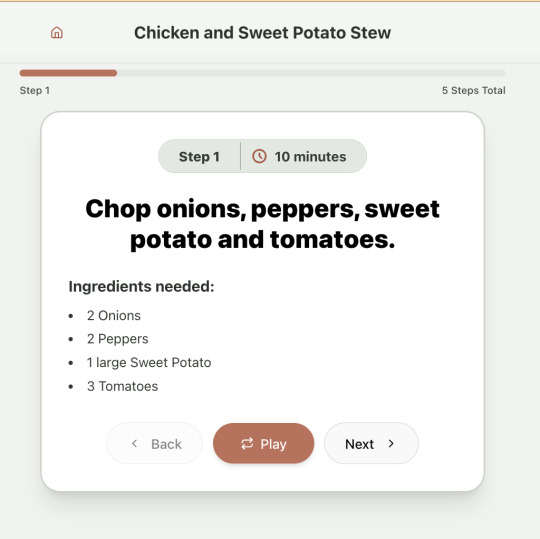
I was pretty astonished that Windsurf managed to integrate both the OpenAI and Elevenlabs APIs without me doing very much at all. After we had a couple of problems with the open AI Ruby library, it quickly fell back to a raw ruby HTTP client implementation, but I honestly didn't care. As long as it worked, I didn't really mind if it used 20 lines of code or two lines of code. And Windsurf was pretty good about enforcing reasonable security practices. I wanted to call Elevenlabs directly from the front end while I was still prototyping stuff, and Windsurf objected very strongly, telling me that I was risking exposing my private API credentials to the Internet. I promised I'd fix it before I deployed to production and it finally acquiesced.
I decided I wanted to add "Advanced Import" functionality where you could take a picture of a recipe (this could be a handwritten note or a picture from a favourite a recipe book) and RecipeNinja would import the recipe. This took a handful of minutes.
Pretty quickly, a pattern emerged; I would prompt for a feature. It would read relevant files and make changes for two or three minutes, and then I would test the backend and front end together. I could quickly see from the JavaScript console or the Rails logs if there was an error, and I would just copy paste this error straight back into Windsurf with little or no explanation. 80% of the time, Windsurf would correct the mistake and the site would work. Pretty quickly, I didn't even look at the code it generated at all. I just accepted all changes and then checked if it worked in the front end.
After a couple of hours of work on the recipe generation, I decided to add the concept of "Users" and include Google Auth as a login option. This would require extensive changes across the front end and backend - a database migration, a new model, new controller and entirely new UI. Windsurf one-shotted the code. It didn't actually work straight away because I had to configure Google Auth to add `localhost` as a valid origin domain, but Windsurf talked me through the changes I needed to make on the Google Auth website. I took a screenshot of the Google Auth config page and pasted it back into Windsurf and it caught an error I had made. I could login to my app immediately after I made this config change. Pretty mindblowing. You can now see who's created each recipe, keep a list of your own recipes, and toggle each recipe to public or private visibility. When I needed to set up Heroku to host my app online, Windsurf generated a bunch of terminal commands to configure my Heroku apps correctly. It went slightly off track at one point because it was using old Heroku APIs, so I pointed it to the Heroku docs page and it fixed it up correctly.
I always dreaded adding custom domains to my projects - I hate dealing with Registrars and configuring DNS to point at the right nameservers. But Windsurf told me how to configure my GoDaddy domain name DNS to work with Heroku, telling me exactly what buttons to press and what values to paste into the DNS config page. I pointed it at the Heroku docs again and Windsurf used the Heroku command line tool to add the "Custom Domain" add-ons I needed and fetch the right Heroku nameservers. I took a screenshot of the GoDaddy DNS settings and it confirmed it was right.
I can see very soon that tools like Cursor & Windsurf will integrate something like Browser Use so that an AI agent will do all this browser-based configuration work with zero user input.
I'm also impressed that Windsurf will sometimes start up a Rails server and use curl commands to check that an API is working correctly, or start my React project and load up a web preview and check the front end works. This functionality didn't always seem to work consistently, and so I fell back to testing it manually myself most of the time.
When I was happy with the code, it wrote git commits for me and pushed code to Heroku from the in-built command line terminal. Pretty cool!
I do have a few niggles still. Sometimes it's a little over-eager - it will make more changes than I want, without checking with me that I'm happy or the code works. For example, it might try to commit code and deploy to production, and I need to press "Stop" and actually test the app myself. When I asked it to add analytics, it went overboard and added 100 different analytics events in pretty insignificant places. When it got trigger-happy like this, I reverted the changes and gave it more precise commands to follow one by one.
The one thing I haven't got working yet is automated testing that's executed by the agent before it decides a task is complete; there's probably a way to do it with custom rules (I have spent zero time investigating this). It feels like I should be able to have an integration test suite that is run automatically after every code change, and then any test failures should be rectified automatically by the AI before it says it's finished.
Also, the AI should be able to tail my Rails logs to look for errors. It should spot things like database queries and automatically optimize my Active Record queries to make my app perform better. At the moment I'm copy-pasting in excerpts of the Rails logs, and then Windsurf quickly figures out that I've got an N+1 query problem and fixes it. Pretty cool.
Refactoring is also kind of painful. I've ended up with several files that are 700-900 lines long and contain duplicate functionality. For example, list recipes by tag and list recipes by user are basically the same.
Recipes by user:

This should really be identical to list recipes by tag, but Windsurf has implemented them separately.
Recipes by tag:

If I ask Windsurf to refactor these two pages, it randomly changes stuff like renaming analytics events, rewriting user-facing alerts, and changing random little UX stuff, when I really want to keep the functionality exactly the same and only move duplicate code into shared modules. Instead, to successfully refactor, I had to ask Windsurf to list out ideas for refactoring, then prompt it specifically to refactor these things one by one, touching nothing else. That worked a little better, but it still wasn't perfect
Sometimes, adding minor functionality to the Rails API will often change the entire API response, rather just adding a couple of fields. Eg It will occasionally change Index Recipes to nest responses in an object { "recipes": [ ] }, versus just returning an array, which breaks the frontend. And then another minor change will revert it. This is where adding tests to identify and prevent these kinds of API changes would be really useful. When I ask Windsurf to fix these API changes, it will instead change the front end to accept the new API json format and also leave the old implementation in for "backwards compatibility". This ends up with a tangled mess of code that isn't really necessary. But I'm vibecoding so I didn't bother to fix it.
Then there was some changes that just didn't work at all. Trying to implement Posthog analytics in the front end seemed to break my entire app multiple times. I tried to add user voice commands ("Go to the next step"), but this conflicted with the eleven labs voice recordings. Having really good git discipline makes vibe coding much easier and less stressful. If something doesn't work after 10 minutes, I can just git reset head --hard. I've not lost very much time, and it frees me up to try more ambitious prompts to see what the AI can do. Less technical users who aren't familiar with git have lost months of work when the AI goes off on a vision quest and the inbuilt revert functionality doesn't work properly. It seems like adding more native support for version control could be a massive win for these AI coding tools.
Another complaint I've heard is that the AI coding tools don't write "production" code that can scale. So I decided to put this to the test by asking Windsurf for some tips on how to make the application more performant. It identified I was downloading 3 MB image files for each recipe, and suggested a Rails feature for adding lower resolution image variants automatically. Two minutes later, I had thumbnail and midsize variants that decrease the loading time of each page by 80%. Similarly, it identified inefficient N+1 active record queries and rewrote them to be more efficient. There are a ton more performance features that come built into Rails - caching would be the next thing I'd probably add if usage really ballooned.
Before going to production, I kept my promise to move my Elevenlabs API keys to the backend. Almost as an afterthought, I asked asked Windsurf to cache the voice responses so that I'd only make an Elevenlabs API call once for each recipe step; after that, the audio file was stored in S3 using Rails ActiveStorage and served without costing me more credits. Two minutes later, it was done. Awesome.
At the end of a vibecoding session, I'd write a list of 10 or 15 new ideas for functionality that I wanted to add the next time I came back to the project. In the past, these lists would've built up over time and never gotten done. Each task might've taken me five minutes to an hour to complete manually. With Windsurf, I was astonished how quickly I could work through these lists. Changes took one or two minutes each, and within 30 minutes I'd completed my entire to do list from the day before. It was astonishing how productive I felt. I can create the features faster than I can come up with ideas.
Before launching, I wanted to improve the design, so I took a quick look at a couple of recipe sites. They were much more visual than my site, and so I simply told Windsurf to make my design more visual, emphasizing photos of food. Its first try was great. I showed it to a couple of friends and they suggested I should add recipe categories - "Thai" or "Mexican" or "Pizza" for example. They showed me the DoorDash app, so I took a screenshot of it and pasted it into Windsurf. My prompt was "Give me a carousel of food icons that look like this". Again, this worked in one shot. I think my version actually looks better than Doordash 🤷♂️
Doordash:
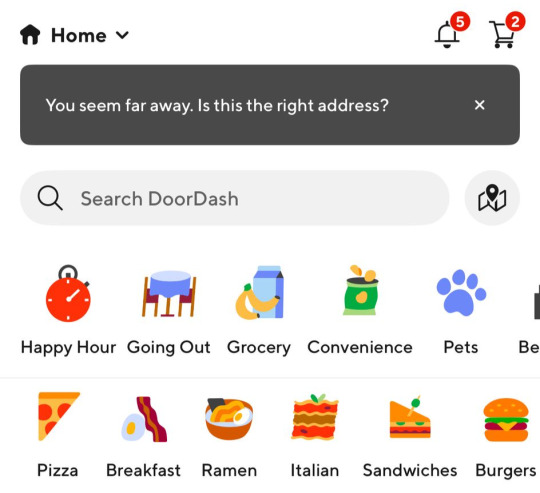
My carousel:
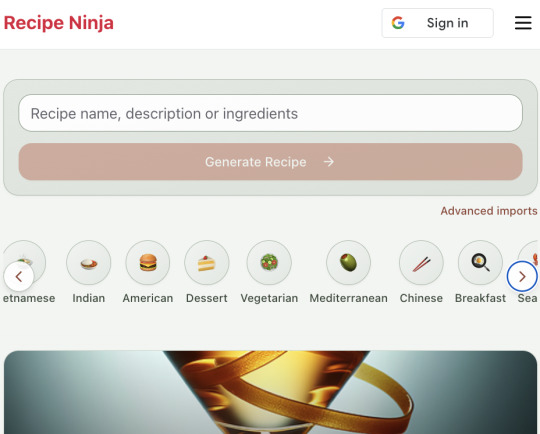
I also saw I was getting a console error from missing Favicon. I always struggle to make Favicon for previous sites because I could never figure out where they were supposed to go or what file format they needed. I got OpenAI to generate me a little recipe ninja icon with a transparent background and I saved it into my project directory. I asked Windsurf what file format I need and it listed out nine different sizes and file formats. Seems annoying. I wondered if Windsurf could just do it all for me. It quickly wrote a series of Bash commands to create a temporary folder, resize the image and create the nine variants I needed. It put them into the right directory and then cleaned up the temporary directory. I laughed in amazement. I've never been good at bash scripting and I didn't know if it was even possible to do what I was asking via the command line. I guess it is possible.

After launching and posting on Twitter, a few hundred users visited the site and generated about 1000 recipes. I was pretty happy! Unfortunately, the next day I woke up and saw that I had a $700 OpenAI bill. Someone had been abusing the site and costing me a lot of OpenAI credits by creating a single recipe over and over again - "Pasta with Shallots and Pineapple". They did this 12,000 times. Obviously, I had not put any rate limiting in.
Still, I was determined not to write any code. I explained the problem and asked Windsurf to come up with solutions. Seconds later, I had 15 pretty good suggestions. I implemented several (but not all) of the ideas in about 10 minutes and the abuse stopped dead in its tracks. I won't tell you which ones I chose in case Mr Shallots and Pineapple is reading. The app's security is not perfect, but I'm pretty happy with it for the scale I'm at. If I continue to grow and get more abuse, I'll implement more robust measures.
Overall, I am astonished how productive Windsurf has made me in the last two weeks. I'm not a good designer or frontend developer, and I'm a very rusty rails dev. I got this project into production 5 to 10 times faster than it would've taken me manually, and the level of polish on the front end is much higher than I could've achieved on my own. Over and over again, I would ask for a change and be astonished at the speed and quality with which Windsurf implemented it. I just sat laughing as the computer wrote code.
The next thing I want to change is making the recipe generation process much more immediate and responsive. Right now, it takes about 20 seconds to generate a recipe and for a new user it feels like maybe the app just isn't doing anything.
Instead, I'm experimenting with using Websockets to show a streaming response as the recipe is created. This gives the user immediate feedback that something is happening. It would also make editing the recipe really fun - you could ask it to "add nuts" to the recipe, and see as the recipe dynamically updates 2-3 seconds later. You could also say "Increase the quantities to cook for 8 people" or "Change from imperial to metric measurements".
I have a basic implementation working, but there are still some rough edges. I might actually go and read the code this time to figure out what it's doing!
I also want to add a full voice agent interface so that you don't have to touch the screen at all. Halfway through cooking a recipe, you might ask "I don't have cilantro - what could I use instead?" or say "Set a timer for 30 minutes". That would be my dream recipe app!
Tools like Windsurf or Cursor aren't yet as useful for non-technical users - they're extremely powerful and there are still too many ways to blow your own face off. I have a fairly good idea of the architecture that I want Windsurf to implement, and I could quickly spot when it was going off track or choosing a solution that was inappropriately complicated for the feature I was building. At the moment, a technical background is a massive advantage for using Windsurf. As a rusty developer, it made me feel like I had superpowers.
But I believe within a couple of months, when things like log tailing and automated testing and native version control get implemented, it will be an extremely powerful tool for even non-technical people to write production-quality apps. The AI will be able to make complex changes and then verify those changes are actually working. At the moment, it feels like it's making a best guess at what will work and then leaving the user to test it. Implementing better feedback loops will enable a truly agentic, recursive, self-healing development flow. It doesn't feel like it needs any breakthrough in technology to enable this. It's just about adding a few tool calls to the existing LLMs. My mind races as I try to think through the implications for professional software developers.
Meanwhile, the LLMs aren't going to sit still. They're getting better at a frightening rate. I spoke to several very capable software engineers who are Y Combinator founders in the last week. About a quarter of them told me that 95% of their code is written by AI. In six or twelve months, I just don't think software engineering is going exist in the same way as it does today. The cost of creating high-quality, custom software is quickly trending towards zero.
You can try the site yourself at recipeninja.ai
Here's a complete list of functionality. Of course, Windsurf just generated this list for me 🫠
RecipeNinja: Comprehensive Functionality Overview
Core Concept: the app appears to be a cooking assistant application that provides voice-guided recipe instructions, allowing users to cook hands-free while following step-by-step recipe guidance.
Backend (Rails API) Functionality
User Authentication & Authorization
Google OAuth integration for user authentication
User account management with secure authentication flows
Authorization system ensuring users can only access their own private recipes or public recipes
Recipe Management
Recipe Model Features:
Unique public IDs (format: "r_" + 14 random alphanumeric characters) for security
User ownership (user_id field with NOT NULL constraint)
Public/private visibility toggle (default: private)
Comprehensive recipe data storage (title, ingredients, steps, cooking time, etc.)
Image attachment capability using Active Storage with S3 storage in production
Recipe Tagging System:
Many-to-many relationship between recipes and tags
Tag model with unique name attribute
RecipeTag join model for the relationship
Helper methods for adding/removing tags from recipes
Recipe API Endpoints:
CRUD operations for recipes
Pagination support with metadata (current_page, per_page, total_pages, total_count)
Default sorting by newest first (created_at DESC)
Filtering recipes by tags
Different serializers for list view (RecipeSummarySerializer) and detail view (RecipeSerializer)
Voice Generation
Voice Recording System:
VoiceRecording model linked to recipes
Integration with Eleven Labs API for text-to-speech conversion
Caching of voice recordings in S3 to reduce API calls
Unique identifiers combining recipe_id, step_id, and voice_id
Force regeneration option for refreshing recordings
Audio Processing:
Using streamio-ffmpeg gem for audio file analysis
Active Storage integration for audio file management
S3 storage for audio files in production
Recipe Import & Generation
RecipeImporter Service:
OpenAI integration for recipe generation
Conversion of text recipes into structured format
Parsing and normalization of recipe data
Import from photos functionality
Frontend (React) Functionality
User Interface Components
Recipe Selection & Browsing:
Recipe listing with pagination
Real-time updates with 10-second polling mechanism
Tag filtering functionality
Recipe cards showing summary information (without images)
"View Details" and "Start Cooking" buttons for each recipe
Recipe Detail View:
Complete recipe information display
Recipe image display
Tag display with clickable tags
Option to start cooking from this view
Cooking Experience:
Step-by-step recipe navigation
Voice guidance for each step
Keyboard shortcuts for hands-free control:
Arrow keys for step navigation
Space for play/pause audio
Escape to return to recipe selection
URL-based step tracking (e.g., /recipe/r_xlxG4bcTLs9jbM/classic-lasagna/steps/1)
State Management & Data Flow
Recipe Service:
API integration for fetching recipes
Support for pagination parameters
Tag-based filtering
Caching mechanisms for recipe data
Image URL handling for detailed views
Authentication Flow:
Google OAuth integration using environment variables
User session management
Authorization header management for API requests
Progressive Web App Features
PWA capabilities for installation on devices
Responsive design for various screen sizes
Favicon and app icon support
Deployment Architecture
Two-App Structure:
cook-voice-api: Rails backend on Heroku
cook-voice-wizard: React frontend/PWA on Heroku
Backend Infrastructure:
Ruby 3.2.2
PostgreSQL database (Heroku PostgreSQL addon)
Amazon S3 for file storage
Environment variables for configuration
Frontend Infrastructure:
React application
Environment variable configuration
Static buildpack on Heroku
SPA routing configuration
Security Measures:
HTTPS enforcement
Rails credentials system
Environment variables for sensitive information
Public ID system to mask database IDs
This comprehensive overview covers the major functionality of the Cook Voice application based on the available information. The application appears to be a sophisticated cooking assistant that combines recipe management with voice guidance to create a hands-free cooking experience.
2 notes
·
View notes
Text
i bought a domain for my family to share i couldnt delibrareate what framework to use cuz im trying. to accommodate Pet Site on it. but i finilly decided on slim framework 4 + twig templates + doctrine. so im trying to figure out how that all waorks but i need to set up a homepage on my new domain
i will be honest neocities has SUCKED In recent years their server goes down constantly with no warning/maintenace logs. both your site frontend and the site editors. so visitors cant even access your site at random and its been happening more and more. like wtf is the issue. i used to pay for premium but like its not worth it at $5/mo..... just switch to a dedicated server host!!!!!! its actually cheaper unless you specifically want more than like 10 static sites. im using hostinger.
also hostinger used to have 000webhost which is ran my test site and they nuked it >:( so i switched my test site to infinityfree. which is running lovely. and support seems responsive there and helps you figure out how to work around free account limitations, like no domain e-mail.
anyway i was working off an old pet site framework called mysidia addoptables from like 2011 (last release was 2021) but recently i decided i cant work with it anymore it's too janky, dated, and just messed up 😅 i love the community that still hangs around it but the code is FUUUUUUCKED. so i'm starting from scratch...
this is also still my firsrt foray into php but mysidia has taught me BAD HABITS.... i literally have a folder of screenshots where i just screencap the code and soyjak at how bad it is. (why did you install smarty template and htmlpurifier and then... barely use them..........)
ANYWAYS. all my pet site progress is no longer very easy to catalog cuz it's just boring code. but by god it's easier to figure out how to roadmap it now that i'm not working with the stupidiest base code. i guess you can look at these upcoming pets tho :^) (wont be released til i draw all their other painted forms)


2 notes
·
View notes
Text
Omg I just spent like 2 entire days trying to figure out how to access my shop again after it wouldn't let me just re-install it in my webspace because of changed php requirements. My old version store requires an outdated php version which my provider doesn't support anymore. How it even worked up until May is beyond me, but I digress.
So! Made it work finally by installing older versions of everything locally on my pc (also on Linux, I honestly applaud myself for that feat XD).
Now. Since I can't just go back to the older version because of the php problem, the question is how to go about getting all the info from my old shop into the new version. The issue is that the databases aren't compatible anymore either 🙄 So do I transfer everything manually via good ol' copypasta (takes ages, but shouldn't cause any issues) ooor do I try to upgrade the locally installed shop gradually to the new version and then transfer everything to the live shop (could be quicker, but the risk of breaking all sorts of things is pretty high tbh... Prestashop is not for the faint of heart (but it's free so I chose it anyway)). Decisions, decisions...
#random stuff#online shop#I'm kinda leaving towards the copypasta version#not exactly in a hurry anyway since I'm not comfortable getting the shop live again anytime soon#but the amount of time and energy 🥲#then again it might still be faster than the riskier method IF that one would go wrong...#so yeah#also I probably can't use my old theme anymore that I spent about a year on configuring at the time 💔#not doing THAT again for sure#will just use and tweak the classic theme I guess#if it really doesn't work anymore#maybe I'm lucky tho??#we'll see#edit:#manually copying all the database entries WILL take ages#and I have to be mindful of all sorts of things#but just tested it with an old test order and at least it shows up in the new back office so I'm hopeful#just not looking forward to the tediousness of it all XD
5 notes
·
View notes
Text
Exploring the Realm of cPanel Hosting in Australia: A Comprehensive Guide
In the vast digital landscape of Australia, where businesses thrive and online presence is paramount, finding the right hosting solution is akin to selecting a foundation for a skyscraper. In this digital age, where websites serve as the face of enterprises, the choice of hosting can significantly impact performance, user experience, and ultimately, the success of ventures. Among the plethora of options, cPanel hosting stands out as a popular choice for its user-friendly interface, robust features, and reliability. But what exactly is cPanel hosting, and why is it gaining traction among businesses in Australia?

Understanding cPanel Hosting
What is cPanel hosting?
cPanel hosting is a type of web hosting that utilizes the cPanel control panel, a web-based interface that simplifies website and server management tasks. It provides users with a graphical interface and automation tools, allowing them to effortlessly manage various aspects of their website, such as file management, email accounts, domain settings, databases, and more.
How does cPanel Hosting Work?
At its core, cPanel hosting operates on a Linux-based server environment, leveraging technologies like Apache, MySQL, and PHP (LAMP stack). The cPanel interface acts as a centralized hub, enabling users to perform administrative tasks through a user-friendly dashboard, accessible via any web browser.
Benefits of cPanel Hosting
User-Friendly Interface
One of the primary advantages of cPanel hosting is its intuitive interface, designed to accommodate users of all skill levels. With its graphical layout and straightforward navigation, even those with minimal technical expertise can manage their websites efficiently.
Comprehensive Feature Set
From creating email accounts to installing applications like WordPress and Magento, cPanel offers a wide array of features designed to streamline website management. Users can easily configure domains, set up security measures, and monitor website performance, and much more, all from within the cPanel dashboard.
Reliability and Stability
cPanel hosting is renowned for its stability and reliability, thanks to its robust architecture and frequent updates. With features like automated backups, server monitoring, and security enhancements, users can rest assured that their websites are in safe hands.
Scalability and Flexibility
Whether you're running a small blog or managing a large e-commerce platform, cPanel hosting can scale to meet your needs. With options for upgrading resources and adding additional features as your website grows, cPanel offers the flexibility required to adapt to evolving business requirements.
Choosing the Right cPanel Hosting Provider
Factors to Consider
When selecting a cPanel hosting provider in Australia, several factors should be taken into account to ensure optimal performance and reliability:
Server Location: Choose a provider with servers located in Australia to minimize latency and ensure fast loading times for local visitors.
Performance: Look for providers that offer high-performance hardware, SSD storage, and ample resources to support your website's needs.
Uptime Guarantee: Opt for providers with a proven track record of uptime, ideally offering a minimum uptime guarantee of 99.9%.
Customer Support: Evaluate the level of customer support offered, ensuring prompt assistance in case of technical issues or inquiries.
Conclusion
In conclusion, cPanel hosting serves as a cornerstone for businesses seeking reliable and user-friendly cpanel hosting Australia. With its intuitive interface, comprehensive feature set, and robust architecture, cPanel empowers users to manage their websites with ease, allowing them to focus on their core business objectives.
2 notes
·
View notes
Text
This day in history
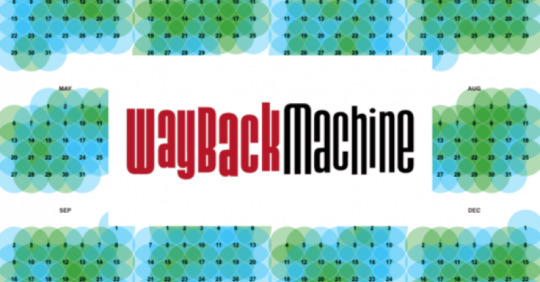
I'm in Minneapolis! Today (Oct 15): Presenting The Internet Con at Moon Palace Books. Monday (Oct 16): Keynoting the 26th ACM Conference On Computer-Supported Cooperative Work and Social Computing.

#20yrsago Identity thief steals sex-offender’s name https://web.archive.org/web/20031002192428/http://www.sexcriminals.com/news/15382/
#15yrsago Librivox free audiobook library now has 365 days’ worth of continuous listening material https://librivox.org/2008/10/15/365-days-of-librivox-audio/
#15yrsago Canada elects 34 copyfighters to Parliament https://web.archive.org/web/20081018165923/https://www.michaelgeist.ca/content/view/3450/125/
#15yrsago BART directors to management: stop using terrorism “fearmongering” https://www.sfgate.com/bayarea/article/bart-debates-allowing-drinks-on-trains-3266010.php
#15yrsago Wedding Ring Cipher contest winners https://memex.craphound.com/2008/10/15/wedding-ring-cipher-contest-winners/
#10yrsago South London school bans “slang” https://memex.craphound.com/2013/10/15/south-london-school-bans-slang/
#10yrsago Why email services should be court-order resistant https://freedom-to-tinker.com/2013/10/15/a-court-order-is-an-insider-attack/
#10yrsago EFF to Comic-Con: protect our secret identities! https://www.eff.org/deeplinks/2013/10/open-letter-comic-con-organizers-protect-our-secret-identities
#10yrsago Homlessness and technological literacy: the Tenderloin Technology Lab https://www.wired.com/2013/10/homeless-but-wired/
#5yrsago Epson is teaching the internet not to install security updates https://www.vice.com/en/article/pa98ab/printer-makers-are-crippling-cheap-ink-cartridges-via-bogus-security-updates
#5yrsago Printer refuses humor magazine because “Christian owners” want to protect “the kids” https://www.patreon.com/posts/good-evening-21990238
#5yrsago Parkland kids’ Rube Goldberg machine illustrates the aftermath of school shootings https://www.youtube.com/watch?v=Mue3N5a9NQE
#5yrsago A sensible, free guide to negotiating book contracts https://www.authorsalliance.org/wp-content/uploads/2018/10/20181003_AuthorsAllianceGuidePublicationContracts.pdf
#5yrsago Wannacry ransomware cost the British National Health Service £92m ($121m) https://web.archive.org/web/20181015161904/https://www.theinquirer.net/inquirer/news/3064515/wannacry-attack-cost-cash-strapped-nhs-an-estimated-gbp92m
#5yrsago What would a “counterculture of AI” look like? https://www.opendemocracy.net/en/rethinking-ai-through-politics-of-1968/
#5yrsago Bruce Sterling on the next 50 years of climate-wracked maker architecture https://www.youtube.com/watch?v=-p4DV80xrm8
#5yrsago China’s panicked upper middle class are easy picking for offshore real estate scams https://www.scmp.com/economy/china-economy/article/2167731/desperate-chinese-middle-class-take-big-risks-move-money-and-themselves
#5yrsago Blame billionaires for climate change https://www.gq.com/story/billionaires-climate-change
#5yrsago Georgia Senator, asked about voter suppression, mugs constituent for his phone https://www.cnn.com/videos/politics/2018/10/14/david-perdue-snatch-phone-voter-suppression-sot-nr-vpx.cnn
#5yrsago A dating website for Trump supporters leaked its customers’ data ON DAY ONE https://techcrunch.com/2018/10/15/donald-daters-a-dating-app-for-trump-supporters-leaked-its-users-data/
#1yrago How lawyers became sadists https://pluralistic.net/2022/10/15/lex-sadist/#incentives-matter


My next novel is The Lost Cause, a hopeful novel of the climate emergency. Amazon won't sell the audiobook, so I made my own and I'm pre-selling it on Kickstarter!
6 notes
·
View notes
Text
CAKE PHP DEVELOPMENT
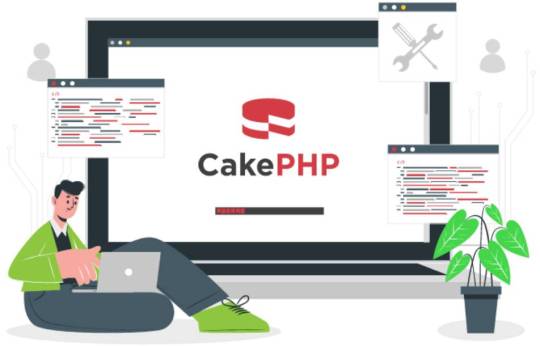
What is CakePHP?
CakePHP is an open-source web framework written in PHP scripting language for web development based on the core PHP framework and MVC architecture. MVC architecture mostly Centre on model, view, and controller of the specific project to give logical separation of code from the end user.
CakePHP was created by Michal Tatarynowicz in April Year 2005. The framework gives a strong base for your application. It can hold each aspect, from the user’s beginning request all the way to the final supply of a web page.
And since the framework follows the fundamental of MVC, it permits you to simply customize and expand most aspects of your application.
The CakePHP also gives a simple organizational structure, from filenames to database table names, keeping your whole application constant and logical. This concept is easy but impressive. Go around with the protocol and you’ll always know absolutely where things are and how they’re arranged.
Here’s a quick list of CakePHP features such as:
It follows MVC architecture
Rapid development
Application scaffolding
Active, friendly community
Built-in validations
Secure, scalable, and stable
Flexible licensing
Localization

Why select CakePHP for website development:
1. Compatible : The Cakephp is compatible with several versions of PHP as well as with the in demand website directories.
2. Customizable Elements : The Elements residing inside the framework are simple to redesign and understand.
3. No Download Required : There is no requiring downloading the whole package as you can get started by directly installing the database.
4. Code Reusability : Coding from scratch isn’t needed as code-written can be used so many times in the project decrease time and effort.
5. MVC Pattern : Huge apps need a structured pattern to get started, which CakePHP offers with its special MVC pattern.
6. Code Simplicity : Easy code written in PHP can do the trick for you. The framework is simple, successful and high on areas like security and session handling.
“Make use of CakePHP means your core application’s is well checked and is being always improved.”
At Kudosta, Website Design and Development Company we provide CakePHP web services such as Framework Customization, CakePHP Module Development, CakePHP Migration and lots more. Try to deliver the best of CakePHP web services in the market.
We have worked for several big scale as well as medium scale enterprises. Our team of skilled CakePHP programmers work with passion, practice new techniques offers you the best depending on your project’s needs.
#php development#ecommerce web design#custom web design#wordpress website#custom web development#seo services#wordpress development#web design#web development#custom web#laravel#react#nodejs#cakephp
4 notes
·
View notes
Text
How to Install Wordpress on Ubuntu 24.04
How to Install Wordpress on Ubuntu 24.04 - Install and configure WordPress on Ubuntu 24.04 with LEMP. Set up Nginx, MySQL, and PHP to host secure, dynamic WordPress sites.
0 notes
Text
How to Install PHP 7.4 on FreeBSD 14.0
Learn how to install PHP 7.4 on FreeBSD 14.0 with this step-by-step guide from Vultr. This tutorial covers essential commands and configuration tips to get your PHP environment up and running efficiently on a FreeBSD server. Ideal for developers and system administrators.

0 notes